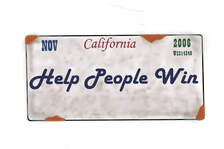 We wrap up our series on the Essential Elements of Close-knit Teams by looking at the power of ceremony and ritual to cement the bonds that can last a lifetime. How you say hello and how you say goodbye have been proven to make a lasting impact, and with a work or sports team it matters even more. The buzz of doing it right feels great and the sting of doing it poorly can last a lifetime. Saying Hello We began the year by highlighting Owen Eastwood's work on how to bring people from widely different cultures together. His book “Belonging” drives home how important it is to have ceremony at the beginning of a season or when a new person is added. Instead of the new person being the "low-man" or paying a new person tax, they are welcomed as an important member of the community. Getting off to a Good Start As the leader of the team, you are weaving several different common threads together each year. You make sure that everyone can connect to the aligned vision, understand their role, and feel at home. You also give them room to push themselves and have a major say in how they are going to pursue their best self. Finally, you equip them to take that best self and combine it with others to make a collective effort that can compete at the highest level possible. The best players usually want to get better and love to work with and for people who help them improve. As you allocate the time between culture, effort, and skill you are weaving a collective rope that bonds everyone involved with the mission together. How do you Build a Flywheel that Sustains the Right Culture? The leader seeks to create a safe place first and then should facilitate a discussion on what matters most and how the team will take the key actions towards the agreed upon goal. Reid Hoffman wrote about the way they scaled LinkedIn in his book “The Alliance” amidst the challenges of a Silicon Valley work culture which was talented but prone to job hopping which undermined their mission. One way to connect people to a common vision is to give them a say in what the values of the team are. We have adapted the alignment and value process they used into a “Groups2Teams” process that can take between 1 and 2 hours. When a leader facilitates this process, the team ends up owning the values because they chose them. Jack Clark, the head coach for Men's Rugby at Cal has taken this to the next level by attaching a question that each member can ask themselves to hold them to the standard of that value. We call this a dynamic question because it activates the value and helps your team self regulate whether they are a unit of 10, 1,000 or even 100,000 people. Here are a series of videos Jack did with some other coaches at the What Drives Winning Coaches Symposium. Once a team has a common way they will act it becomes much easier for leaders from within the organization to emerge. These leaders will embody the values on their path to accomplishing the stated goals. The correlation between action and success only emboldens the culture. The leaders are often called captains and the coach that can empower captains has a major competitive advantage. Captains take recruits on their campus visits. Captains recruit people from other companies to join the team. Captains drive the herd to cull the wrong behaviors that can sabotage a team’s success. Captains drive and build culture and over time as they age out or move up in a work environment, they are a major part of the organization's stored value or flywheel of culture. Saying Goodbye and Building out the Alumni Network Hoffman also addresses the reality of people leaving your organization and takes a page from the university system by calling it an alumni network. This connection may seem like a stretch at first because many people leave a company on different terms than they left or graduated from their school. However, alumni fit the goal that the company should have, which is to honor those that move on in such a way that they might be a good resource for future employees. In a sports team context, the end of a season marks the dissolving of a class or year and should not be missed regardless of the outcomes on the field. Championship teams can pass around hardware like trophies or rings but just as important is how the players grew individually and collectively. The armed forces sports teams are seldom national champions and yet after their tours of duty are finished every potential employer knows the values those players will bring to the interview or job. Over time different teams or companies will build out a competitive advantage in recruiting because the alumni network will help the leaders select the right players more often. Bo Schembechler was the head football coach at Michigan and had a great line about recruiting. “If you miss the right guy and he goes across the street, he might beat you once a year, but if you take the wrong guy, he ends up beating you every day in practice.” Your alumni network should understand what your “our kinda guys” or OKG is. With more nodes of intelligence out there the leaders have a better chance of digging down to the softer skills like heart or drive that can be missing on a video or a resume. All these benefits are part of the reason it is so important to memorialize the commitment made, the relationships built, and the shared memories that were experienced at the end of a season. Companies can do this on a calendar basis with much of the same effect. The cadence of reflecting and honoring the past contributions can be a force multiplier as you move forward and seek to improve in the future. In your organization regardless of your station we hope these elements are ones you can adopt to facilitate the creation of a closer-knit unit as you seek to be a force multiplier for good. Thank you for your readership and friendship this year.
0 Comments
Leave a Reply. |
Archives
November 2023
Categories
All
Complete Annual Newsletter Volumes
|
